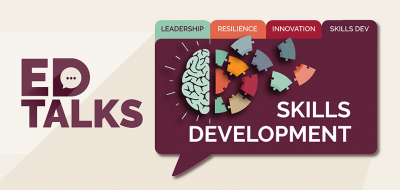Innovation and innovative ideas require space.
Space to think.
Space to reflect.
Space to play.
However, this should never be the starting point.
Navigating Complexity for Innovative Solutions
Innovation has always required a certain degree of mental space—room to think, reflect, and play with ideas. However, the process has evolved in the context of the modern world, now interwoven with the potential of artificial intelligence (AI). AI, when responsibly integrated, can empower innovation by supplementing human creativity with its computational prowess. With AI’s analytical capabilities, we’re not just limited to looking at issues from multiple angles; we can explore a multitude of dimensions and scenarios, each one shedding light on potential solutions, so don’t be afraid integrate it into your processes.
We should start with an issue that interests us, and get busy gathering bits of information, upon bits of information, upon bits of information – until we are at a point of overload. Then we need to struggle with a problem. And really look at it from all possible angles, turning it inside out, and upside down – almost to the point of exhaustion.
The Power of Subconscious for Innovative Breakthroughs
Oliver Wendell Holmes said: “I would not give a fig for the simplicity this side of complexity, but I would give my life for the simplicity on the other side of complexity.”
We all want quick fixes and we often jump to the solution without going through the pain of complexity. Possibly, this is a way to try and avoid the cognitive dissonance that often accompanies ambiguity (just fix it, it will make me feel better). But those who stick with this process, without grabbing the first solution that comes to mind, reap the rewards. Suspend judgement. Keep an open mind. Play with it. Keep struggling with it.
At this point (after as much information as possible has been gathered, and we have grappled sufficiently with the issue at hand), we need to let it go. That’s right. Just let it go. Give it space to incubate. Hand it over to the subconscious mind. Just be. Play. Do nothing about it for a while. Go have some fun. Relax. Be silly. Chill. Meditate.
Nurturing Innovative Ideas: Unleashing the Power of the Subconscious Mind
Then the ideas will come. The ‘Aha!’ moment arrives when you least expect it. As if out of nowhere. (Tip: when you are in this process it is a good idea always to carry a notepad and pen).
And then you test these ideas.
The conscious mind is often referred to as “the ten-dollar machine” and the subconscious mind as the “million-dollar machine”. This process of ‘handing over’ to the subconscious mind allows us to access the power of the million-dollar machine.
Time and Environment: Key Factors for Innovation
There are many examples of where this has happened. James Cameron first found major success after he ‘received’ the idea for the Terminator in a dream. The inventor of modern-day banking had this innovation ‘pop into his head’ while sitting on a beach in the Caribbean. The inventor of the sewing machine was desperately struggling with how to make his invention work – when he had a dream where he was captured by cannibals and noticed that the end of their spears had holes in them.
What these examples have in common is that the inventors first struggled with their problems for quite some time and then went into a relaxed state where their subconscious minds could provide the solution.
Innovation takes time; consequently, it cannot be rushed. An overly pressurised environment is not conducive to innovation, and as a result, inventiveness rarely happens in an atmosphere of fear. We need to be in a relaxed state for the million-dollar machine to work its magic.
If you find yourself in a pressurised environment, carefully cut out a slice of time each week and make this your ‘innovation space’.
Seven Steps to Innovative Ideas
Dedicate this slice of time regularly to following these seven steps:
- Identify the problem.
- Gather as much information as possible.
- Struggle with it – look at it from all possible angles.
- Sit with it – give it space to breathe.
- Let it go.
- Take the answers that come.
- Test them.
Then, do it all over again for as long as is necessary.
written by





